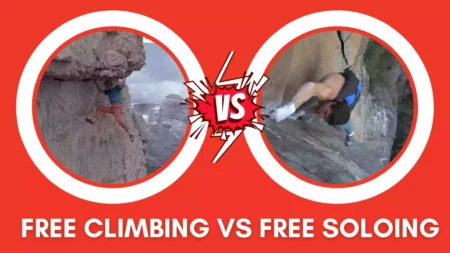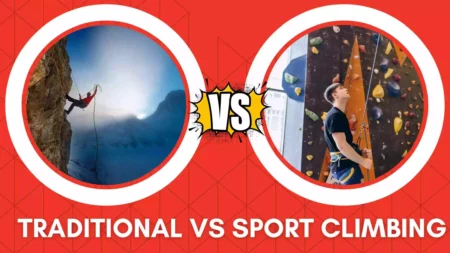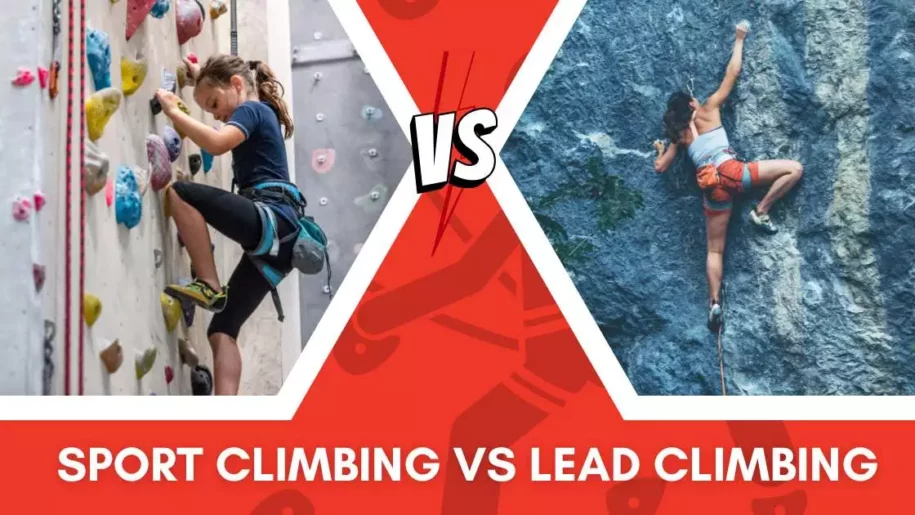
The two most common sports of climbing in gyms and outdoor crags are lead climbing and sport climbing. Both are variations of ascending a rock wall, with differences mainly in technique and safety risks.
Lead climbing is generally considered more dangerous than sport climbing because falls cannot be controlled.
The climber must clip their rope into pre-placed quickdraws (two carabiners connected with a short piece of nylon webbing), which they can only attach to pre-drilled bolt hangers on the wall.
The main difference between lead sport climbing is obvious: with lead climbing, you ascend endlessly, whereas with sport climbing, you ascend ‘pre-set routes’ with protection attached at certain points throughout.
If they fall, they will fall from much further up the wall than if they fell while sport climbing. Lead climbers need to take excellent care when clipping into bolts, as falling would likely be much more severe than a similarly high fall when sport climbing.
If a lead climber falls on a climb that doesn’t have pre-drilled bolt hangers – called ‘endless’ or ‘pure’ lead climbs – then they may have trouble stopping their fall before hitting the ground.
It is not recommended for inexperienced climbers due to its higher risk of consequences should something go wrong.
In contrast, sport climbing does not require predrilled bolt hangers and uses fixed protection that can be removed easily if it is touched during ascent: anchors (usually made of chains) are used to clip your rope so that if you fall, you don’t hit the ground or an obstacle below.
What Is Sport Climbing How Am I Protected In Sports Climbing?
Sport climbing is a type of climbing that relies heavily on pre-set protection, i.e., pre-placed carabiners and quickdraws on fixed and stable anchors.
The climber is clipped into the rope by a ‘belay device,’ which is either a ‘brake’ device for sport climbing with a rope attached to it or an anchor at which a ‘belay device’ is attached to the rope.
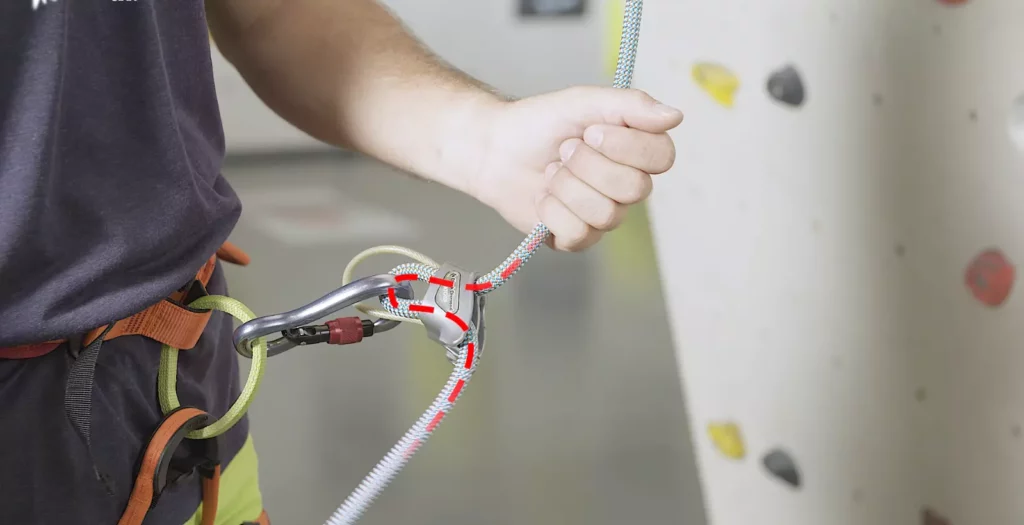
If the climber were to fall, they would be stopped from hitting the ground by the rope attached to the belayer.
The belayer will then use the braking action of the belay device to lower the climber to the ground. In this sense, the climber is protected by the rope and the belay device.
What Is Lead Climbing, And How Am I Protected From Lead Climbing?
Lead climbing is a technique where the climber ascends a rock face ‘endlessly,’ using no pre-placed protection.
This means that if a fall were to happen, the only thing protecting them would be their ability to react to it and descend quickly and safely.
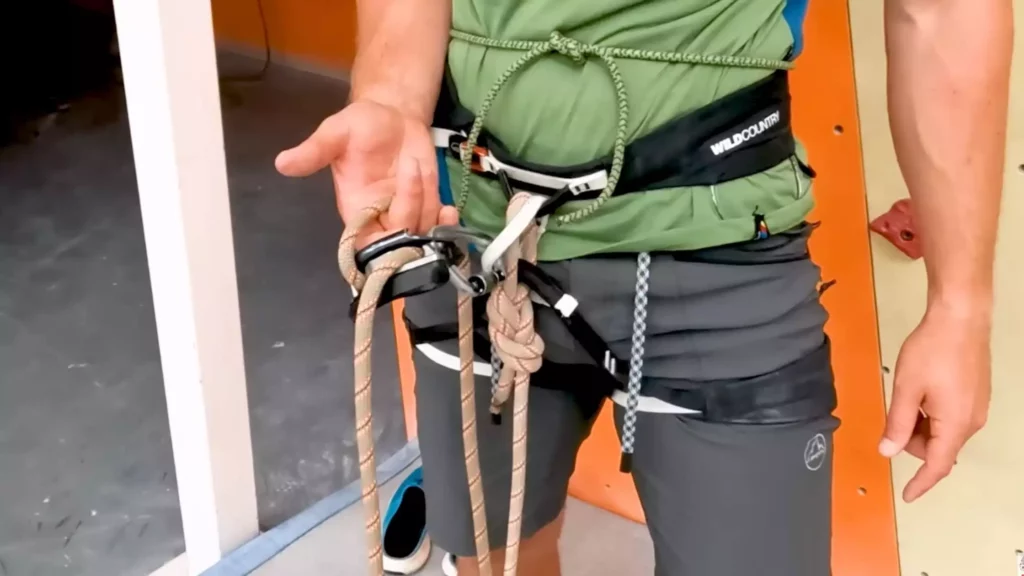
In this sense, they are much more exposed, as the rope is only clipped at the top and at the bottom of the climb (where the climber starts and ends), making the fall much longer than on a sport climb.
Therefore, lead climbers must be confident in their climbing abilities and safety skills. This means the climber must fully trust their mental and physical ability to react to any fall.
Climbing Holds Vs Climbing Holds
Although the actual rock you are climbing with long nails on is the same for both lead and sport climbing, the holds you use to grip and support yourself may differ depending on the climb you’re attempting.
Climbing holds are the ‘handholds’ and ‘ footholds’ found on the rock face.
The holds available will depend on the climbing route you are attempting, which is decided by length, difficulty, and ‘grade.’ In this sense, climbing holds are similar to the rope used for lead climbing.
climbing holds are also different in that they are not just the rope but the actual rock face itself.
How To Sport Climb?
Beginners wanting to take up sport climbing should start with a primary route.
This is a pre-set route set for beginners and is generally more accessible than other routes on the wall. To start sport climbing, find a vertical wall with pre-set protection.
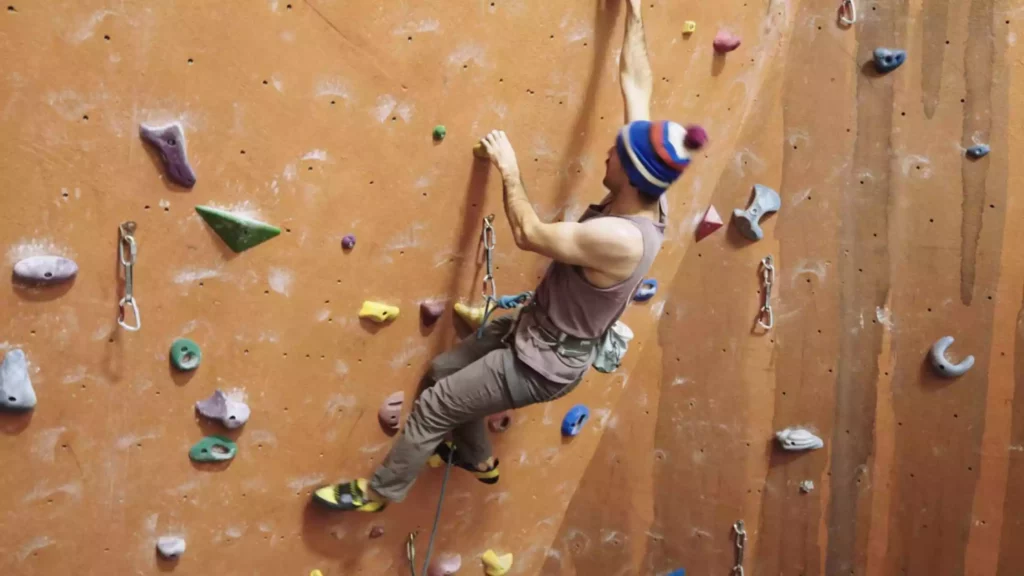
This pre-set protection will be carabiners (metal rings with a spring-loaded clip) and quickdraws (two carabiners connected by a short piece of nylon webbing).
To start sport climbing, use these pre-set carabiners and quickdraws to clip your rope into them at the appropriate wall level (where your foot can reach). Then, begin climbing by placing both hands on the wall and stepping up with one foot.
How To Lead Climb?
Beginners wanting to take up lead climbing should first find a vertical wall with pre-set protection.
This pre-set protection will be carabiners (metal rings with a spring-loaded clip) and quickdraws (two carabiners connected by a short piece of nylon webbing).
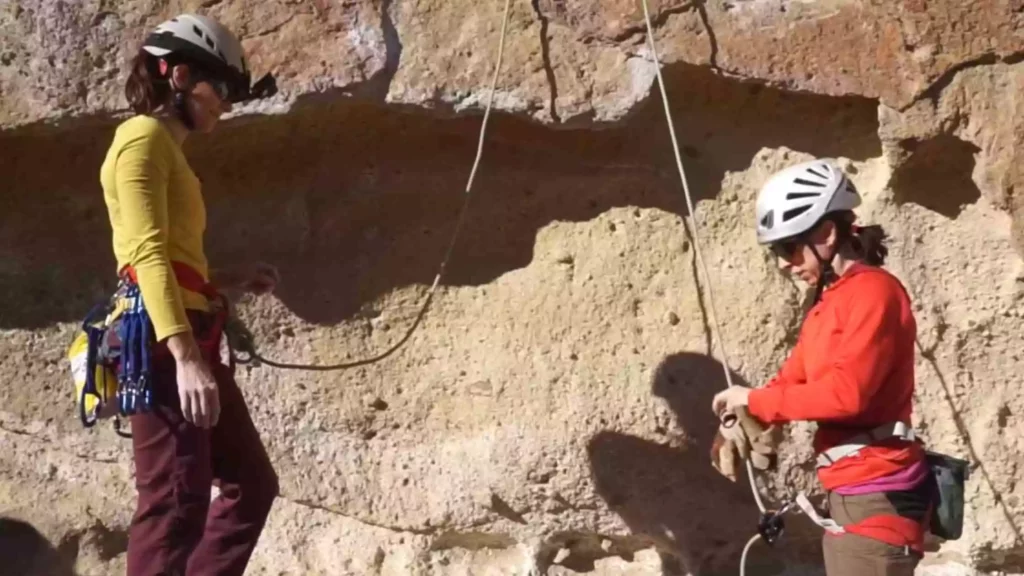
Once you have found a suitable wall, decide on a route (different routes will have different ‘grades’, e.g. easy, intermediate, complex). Once you have decided on a route, you will need to decide how high up the wall you want to start your climb.
Remember, you will need to secure the end of your rope at the bottom of the wall and the other end at the top of the wall.
The easiest way to decide this is to measure the route from the top of the wall to the floor.
Once you have determined the length of your rope, wrap the end with a figure eight (a simple knot used for securing the end of a rope) and clip it to an anchor at the bottom of the wall.
Then, climb by clipping your rope into the pre-set carabiners and quickdraws as you ascend.
Equipment For Sport Climbing And Lead Climbing
Sport climbing requires minimal equipment; all you need is a pair of climbing shoes, a harness, and a short length of rope (usually between 30 and 50 meters).
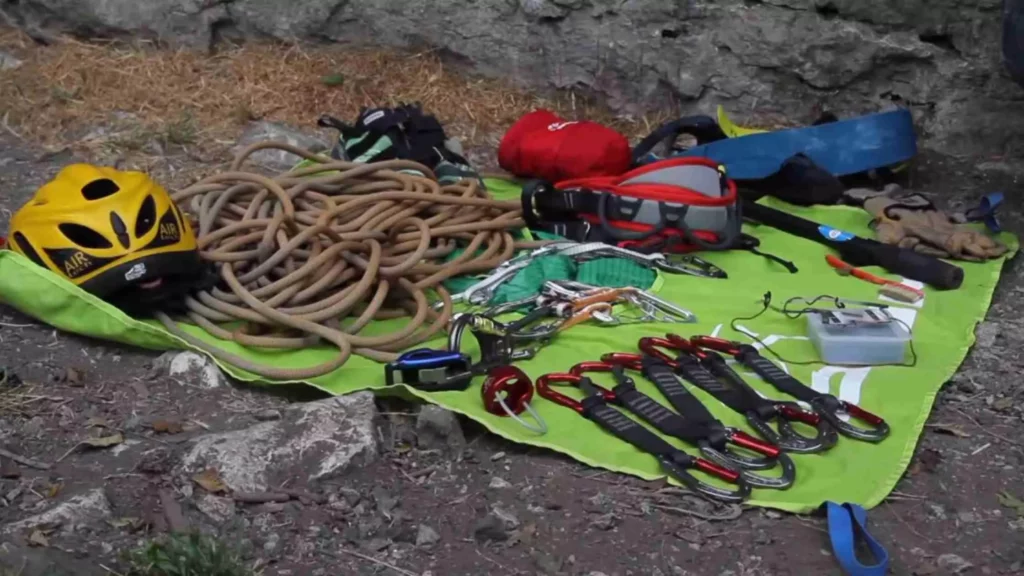
If sport climbs indoors and you don’t have the equipment, you can hire all three pieces from the climbing wall for about £10.
The most important piece of equipment for sport climbing is the climbing shoes. Buying a quality pair of climbing shoes is important; it is the only piece of equipment you will be wearing when climbing, so it needs to fit well, and they should last many years.
Sport climbing regularly will wear out your shoes more quickly, so they may need replacing more frequently.
If you climb only occasionally, you may find that your shoes last you much longer. If you are sport climbing outdoors, you will also need to bring your rope, which will be a significant expense.
Key Considerations For Sport Climbing And Lead Climbing
If there aren’t bolt hangers, the climber can’t ascend the wall and must come down. Sport climbers don’t need to clip into anything unless they use protection to avoid falling.
Differences Between Lead And Sport Climbing
There are also many differences in the approach to these two types of climbing. With lead climbing, the climber ascends the wall endlessly, so they must know the route backward and forwards. This means that they must have a good memory and be able to make decisions.
This makes lead climbing much more dangerous, especially when climbing without a rope, but it also means that you have to have very good technique since a single slip or incorrectly placed foot could send you falling.
Which Type Of Climbing Is Better?
Sport climbing and lead climbing use ropes, shoes, and a harness. Both require quickdraws, carabiners, and anchors on the wall. Both require climbers to learn proper technique and how to clip safely into the wall.
both lead and sport climbing have their benefits and disadvantages. Lead climbing is more dangerous, but sport climbing requires more technical skill and is less likely to result in injury.
Lead climbing is generally more time-consuming and requires more equipment, especially if you are climbing outdoor routes without pre-drilled bolt hangers.
Both sports are incredibly fun and rewarding, so the choice is ultimately up to you. If you’re keen to try something new, give both a go and see which one you like better!
FAQS
Is lead climbing the same as sport climbing?
Although lead climbing and sport climbing both involve ascending a route using ropes, they have some distinct differences. Lead climbing involves placing gear (such as nuts and cams) along the route, while sport climbing involves using pre-placed bolts that are fixed to the wall. Lead climbing is generally considered safer than sport climbing since all of the gear is attached to the lead climber, meaning that if he/she were to fall, the gear would catch them. In contrast, in sport climbing, if the climber were to fall, there is a chance that they could strike one of the pre-placed bolts, potentially causing injury or death.
What is lead in sport climbing?
A lead can be anything from 20-30 meters up to 40-50 meters. In a bouldering gym, a lead is 6-8 meters whereas in the outdoors its 12-15 meters.



